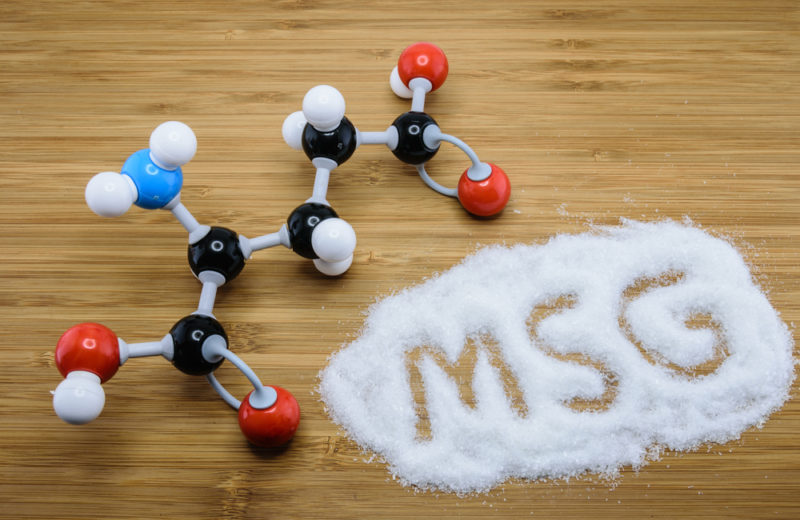With all of the pesticides, chemicals and additives being put into our food these days, it should be no surprise that a common flavor enhancer has been found to be worse than many drugs. The fact that it might be sitting in your pantry right now may be cause for alarm.
What is MSG?
Monosodium glutamate or MSG is a flavor enhancer commonly known as an addition to Chinese inspired food, but it’s also added to thousands of the foods that Americans eat on a regular basis — canned soup, crackers, meat, salad dressing, frozen dinners and more. It can even be found in school cafeterias, and perhaps most concerning — in baby food and infant formula.
MSG is used as a seasoning that enhances the flavor of foods, making processed meats and frozen dinners smell better and taste fresher. Interestingly, MSG doesn’t actually make your food taste better, but it works by tricking your tongue into thinking it does through the presence of umami — the taste of glutamate that is found not only in many Asian dishes, but also tons of common processed foods, including Ramen noodles and bacon. (Sorry, college students.)
Why is MSG Dangerous?
In neurosurgeon Dr. Russell Blaylock’s book, Excitotoxins: The Taste that Kills, he explains that MSG is an excitotoxin, which means that it overexcites your cells to the point of damage or death, and it can even cause brain damage to varying degrees, potentially triggering a number of conditions such as Alzheimer’s disease, Parkinson’s disease and Lou Gehrig’s disease.
The free glutamic acid found in MSG is the same neurotransmitter that the brain, nervous system, eyes, pancreas and other organs use to initiate certain processes in the body. Although the FDA has labeled MSG safe, they state, “Studies have shown that the body uses glutamate, an amino acid, as a nerve impulse transmitter in the brain and that there are glutamate-responsive tissues in other parts of the body as well. Abnormal functions of glutamate receptors have been linked with certain neurological diseases, such as Alzheimer’s disease, Huntington’s and Chorea.”
Many adverse effects have been linked to regular consumption of MSG, including obesity, eye damage, headaches, fatigue, disorientation and depression. The FDA even admits there are “short-term reactions” known as MSG Symptom Complex that may occur in those who have eaten “large doses of MSG.” Those symptoms include:
- Numbness
- Burning sensation
- Tingling
- Facial pressure or tightness
- Chest pain or difficulty breathing
- Headache
- Nausea
- Rapid Heartbeat
- Drowsiness
- Weakness
How to Keep MSG Out of Your Diet
Some food manufacturers have taken MSG out of their products, but the majority have chosen to hide the ingredient under different names. The FDA requires food manufacturers to list the ingredient “monosodium glutamate,” but they do not have to label ingredients that contain free glutamic acid, even though it’s the main component of MSG.
You’ll want to check out this list of ingredients that always contain MSG:
- Autolyzed Yeast
- Calcium Caseinate
- Gelatin
- Glutamate
- Glutamic Acid
- Hydrolyzed Protein
- Monopotassium Glutamate
- Monosodium Glutamate
- Sodium Caseinate
- Textured Protein
- Yeast Extract
- Yeast Food
- Yeast Nutrient
Be sure to read labels when you’re grocery shopping. Flavors and seasonings, soy sauce, broths, powdered milk and “natural flavorings” commonly contain MSG. Generally, if a food is processed, you can assume that it contains MSG. Sticking to a diet of whole, fresh foods is the best way to avoid it. Reading labels might take a little more time, but knowing that the food you are eating and feeding to your family is free of dangerous toxins is worth it.


